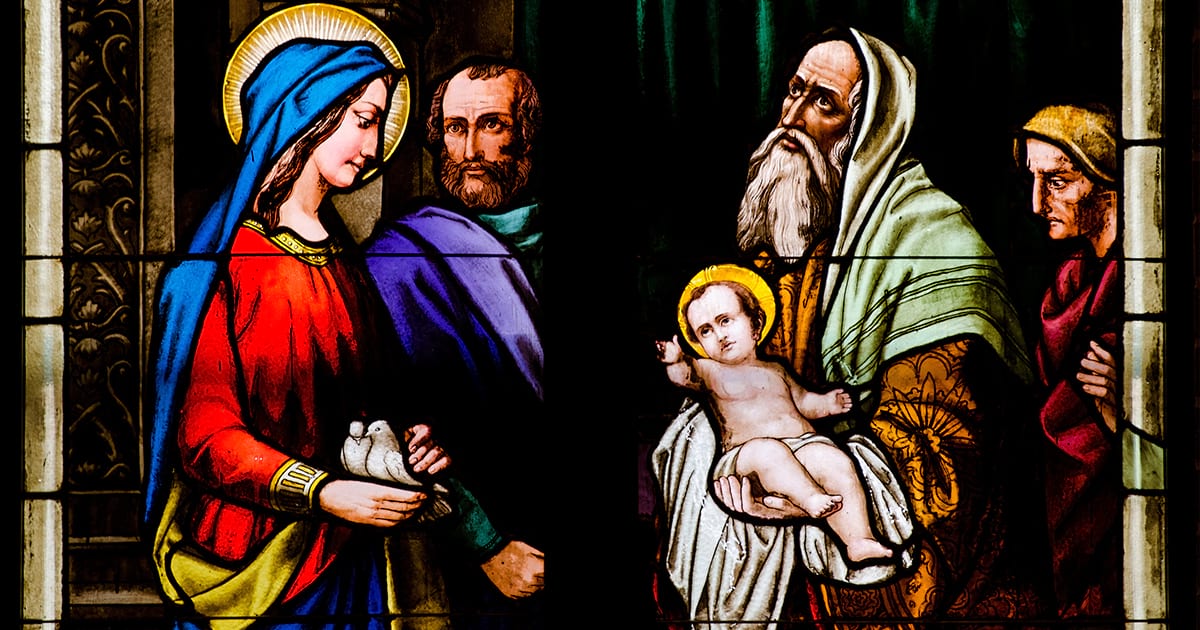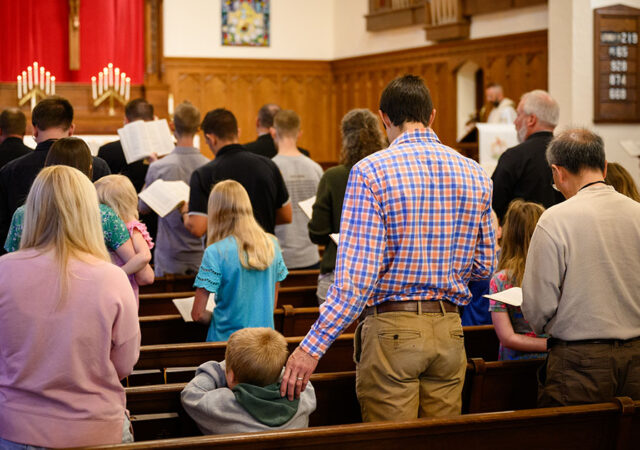
By Matthew C. Harrison
Since 46 B.C., when Julius Caesar instituted the Julian calendar, Jan. 1 has been the first day of the new calendar year. When Pope Gregory XIII revised the Julian calendar in 1582, the “major” change was to correct the length of a year from 365.25 days to 365.2425 days. (Martin Chemnitz, author of the Formula of Concord, approved of the revised calendar.)
The Julian calendar, which featured a leap year every four years, was causing the spring equinox to fall before the date of March 21, throwing off calculations for the date of Easter. The Gregorian calendar added a leap-year skip every three out of four centuries. (2000 was a century change but still a leap year; the next leap-year skip will be A.D. 2100.)
Why does any of that matter? Because it makes Jan. 1 a happy convergence of a date both in the life of Jesus and in our secular “new year.” The Church Year begins anew every first Sunday in Advent, a date determined by the day of the week on which Christmas falls. And despite what the countdown-to-Christmas marketers want you to think, the 12 days of Christmas are not the last 12 days before Dec. 25. The 12 days of Christmas are the days from Christmas Day until the Epiphany of Our Lord on Jan. 6.
So, while people all over the world are marking Jan. 1 as a new beginning and making resolutions to be better this year than last, on Jan. 1 the church is marking the eighth day of Christmas (I hope your tree will still be up!). Of that day, St. Luke records, “And at the end of eight days, when he was circumcised, he was called Jesus, the name given by the angel before he was conceived in the womb” (Luke 2:21). Ever since God made circumcision the sign of His covenant with Abraham, Jewish boys were circumcised and named on the eighth day of their lives (Gen. 17:12). On the liturgical calendar, Jan. 1 is called the Circumcision and Name of Jesus.
In a sermon for New Year’s Day, on which it had become tradition for the preacher to declare from the pulpit wishes for his hearers for the new year, Luther preached, “On this day it is customary to dispense from the pulpit [good wishes for] the new year, as if there were not enough other useful and salutary matters to preach, and it were necessary to present such useless fables in place of the divine Word and to make a game and a joke of so serious an office. The Gospel reading requires us to preach on the circumcision and the name of Jesus, and this we will do!” (LW 76:39).
Why was Jesus circumcised? Luther answered, “This means that Christ is ‘placed under the Law, to redeem those who were under the Law’ [Gal. 4:5]. Moreover, He has subjected Himself to all other laws, to none of which He was obligated, since He is Lord and God over all. Therefore, they have all come into His power, have done Him wrong, and must now justly be subject to Him. Now all of this He has given to us. … See, is this not a precious redemption from the Law through Him who innocently subjected Himself to the Law?” (LW 76:46).
In His circumcision, the Lord began His work of taking our place under the Law. And when He was circumcised, they named Him Jesus, “For he will save his people from their sins” (Matt. 1:21). This is the Name above all names, the Name at which every knee will bow and every tongue confess that He is Lord (Phil. 2:9–10).
Every New Year’s resolution is bound to fail. But with this Name and at the celebration of His first shedding of blood, we begin our new year. If your congregation offers a New Year’s Eve or New Year’s Day service, maybe you will sing this hymn that ties together these otherwise incongruous events:
Now greet the swiftly changing year
With joy and penitence sincere.
Rejoice! Rejoice! With thanks embrace
Another year of grace.
Remember now the Son of God
And how He shed His infant blood.
Rejoice! Rejoice! With thanks embrace
Another year of grace.
This Jesus came to end sin’s war;
This Name of names for us He bore.
Rejoice! Rejoice! With thanks embrace
Another year of grace.
His love abundant far exceeds
The volume of a whole year’s needs.
Rejoice! Rejoice! With thanks embrace
Another year of grace.
(Lutheran Service Book 896, Sts. 1–4)
Just as Jesus was circumcised and named on the eighth day of His infant life, He rose from the dead on the eighth day of the week, a Sunday, the start of the new week and the inauguration of His new creation. Now that Jesus has fulfilled both the command and promise of circumcision, fulfilling the Law and being the One whom the covenant had promised, something greater than the old putting off of part of the flesh has come. St. Paul writes, “In him also you were circumcised with a circumcision made without hands, by putting off the body of the flesh, by the circumcision of Christ, having been buried with him in baptism, in which you were also raised with him through faith in the powerful working of God, who raised him from the dead” (Col. 2:11–12).
Baptism is true union with the death and resurrection of Jesus. And just as Jesus rose triumphant from the grave on the eighth day, many baptismal fonts traditionally had eight sides to signify the beginning of an eternal new week in Him and the hope for His creation restored on the day of His return. Resolutions you’re bound to break pale in comparison to the resurrection confidence that is yours in Jesus.
All of this meandering and musing is to wish you a Happy New Year, one begun under the Name of Jesus, marked by the blood of Jesus, in the confidence that, being baptized into Jesus’ death and resurrection, you have not just a new year, but the perpetual newness of paradise with Him.
Posted Dec. 31, 2022





What a powerful REVELATION to me! Thanks for the knowledge. HAPPY NEW YEAR BISHOP TAYLOR.